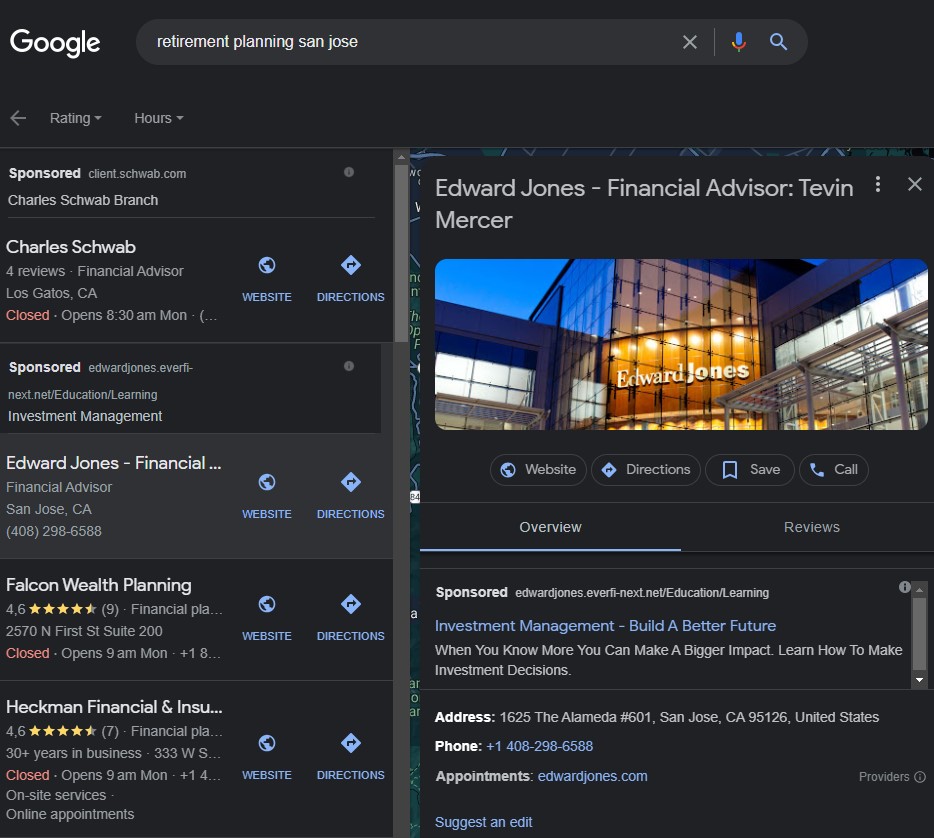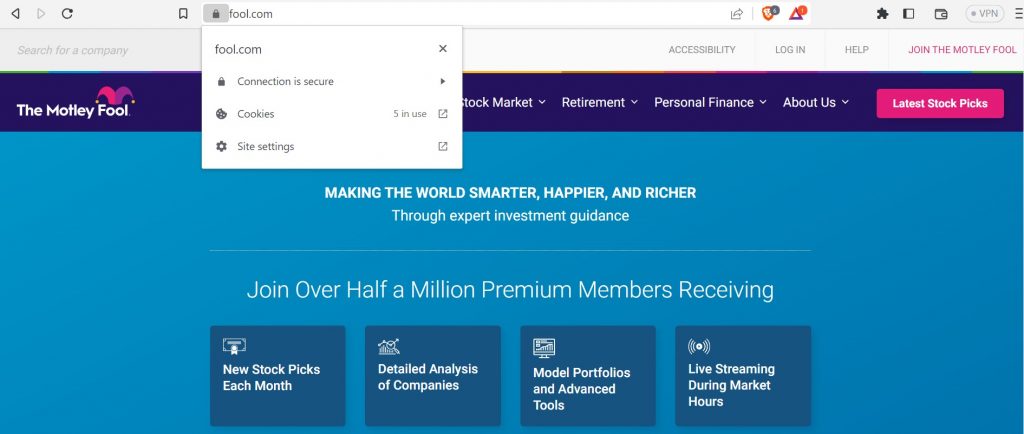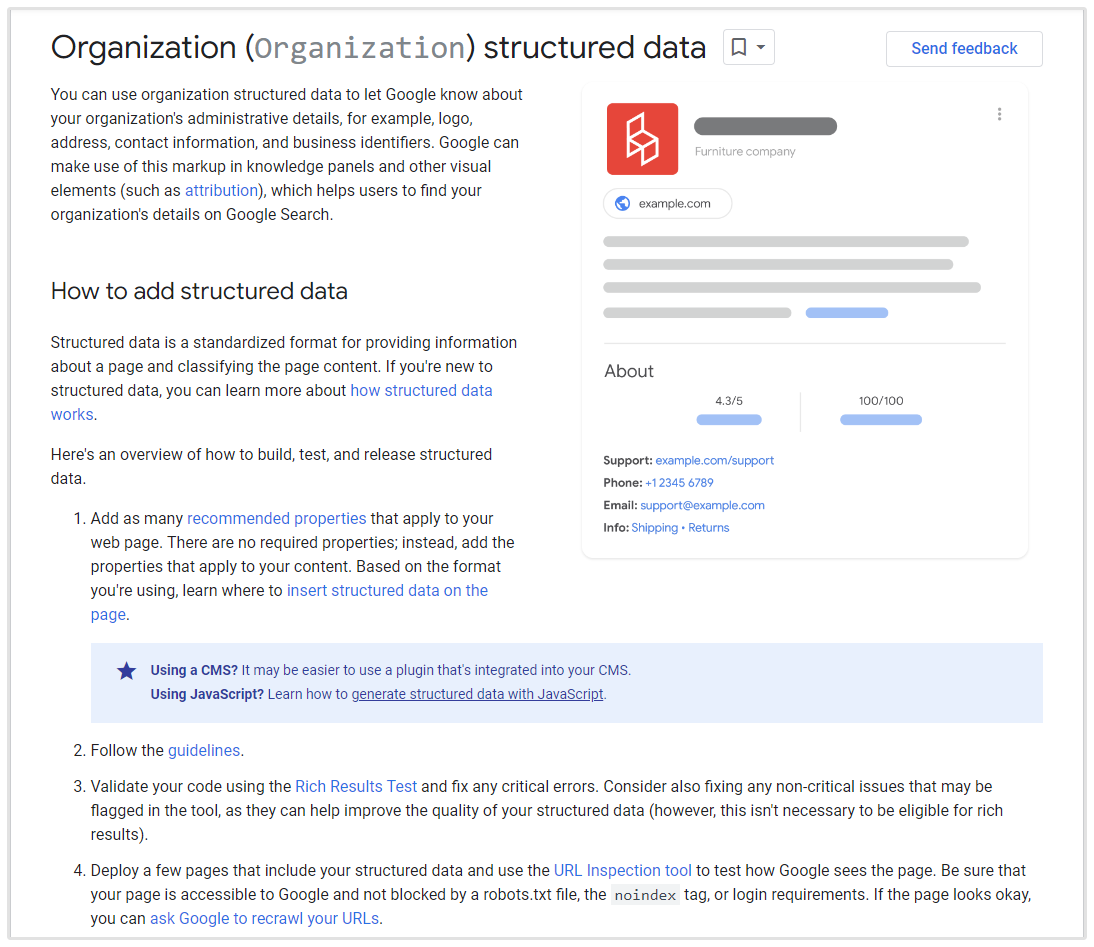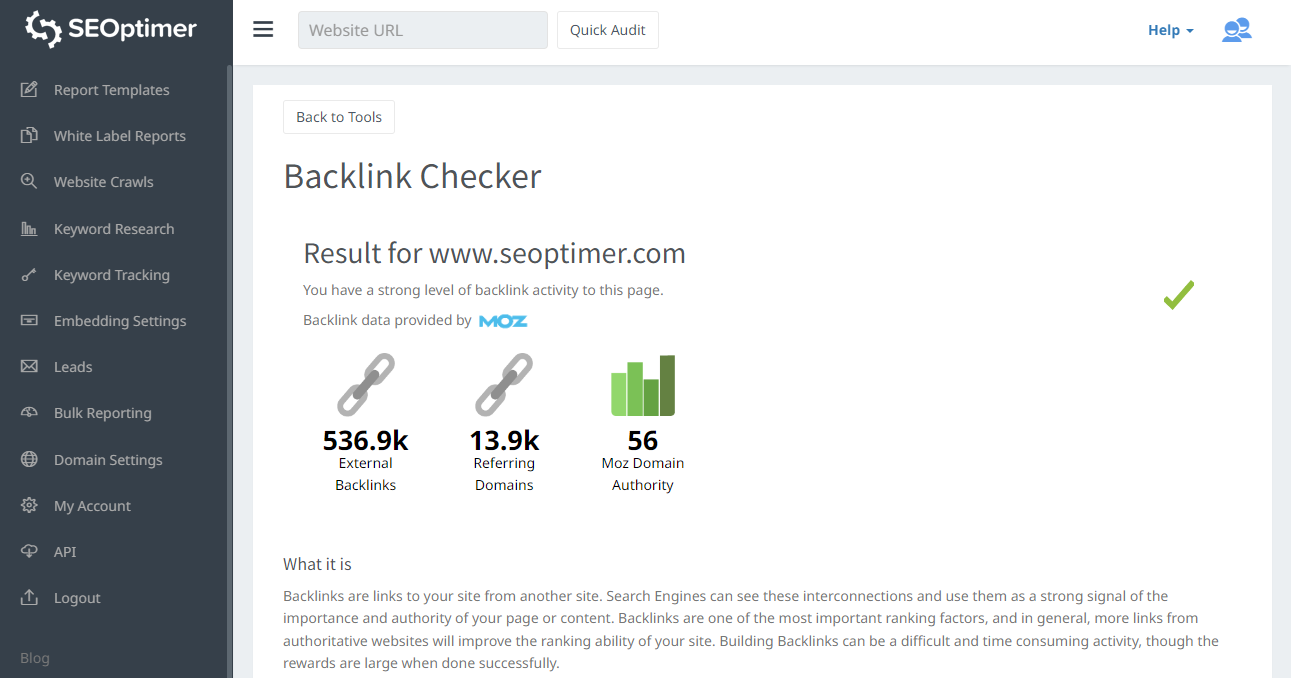
SEO for financial services can be challenging. Investment and wealth management clients use search engines to find information, compare services, and make informed decisions.
By incorporating the eight elements covered in this SEO for financial services guide, you can rank your financial consulting website on the top of the organic SERP and attract more valuable financial leads.
Whether you're a financial advisor, an investment firm, or any other type of financial service provider, this SEO guide will provide you with valuable insights and strategies to optimize your website and increase your online visibility.
What is SEO for Financial Services?
SEO for financial services refers to the process of optimizing your website to attract more targeted organic traffic in the finance niche.
It involves implementing effective SEO techniques and best practices that are tailored specifically to the unique needs and challenges of financial service providers such as investment firms, insurance companies, and financial advisors.

The Importance of SEO for Financial Services
Here are some key reasons why SEO is important for the financial services industry:
Increased Online Visibility
The financial services industry is highly competitive, and customers rely on search engines to find wealth management information and services.
By implementing effective SEO strategies, financial service providers can improve their visibility in search engine results, ensuring that they appear when potential clients are actively searching for relevant services.
Targeted Organic Traffic
SEO helps attract targeted organic traffic to financial services products and wealth management companies. By optimizing for specific keywords and user intent, financial service providers can ensure that they attract visitors who are actively seeking their services.
This targeted traffic is more likely to convert into leads and clients, ultimately driving business growth.
More Trust and Credibility
Financial services inherently involve trust and credibility. When a financial services website appears in top search results, it signals to potential clients that the company is reputable and trustworthy.
SEO can help build trust by improving search rankings, showcasing positive customer reviews, and providing valuable and informative content that establishes your expertise in the industry.
Local Clients
Many financial agencies operate on a local or regional level. Local SEO strategies can help them target potential clients within a specific geographic area.

Optimizing for location-based keywords, creating local landing pages, and managing online profiles can improve visibility in local search results.
Cost-Effective Marketing
Compared to traditional marketing methods, SEO offers a cost-effective approach to reach a wider audience.
Once implemented, SEO efforts continue to yield long-term benefits and sustainable traffic without incurring ongoing advertising expenses.
Adaptability to Industry Changes
The financial services industry is subject to evolving tech trends, regulations, and customer behaviours.
By monitoring search trends, adjusting keywords and content, and staying updated with industry news, financial services companies can maintain their relevance and visibility in a rapidly changing market.
By investing in SEO strategies, financial companies can position themselves for long-term success and growth in the industry.
8 Elements of SEO for Financial Services
Here are the top 8 elements that should be a part of every successful financial services SEO strategy to establish a strong online presence in this competitive industry:
Ensure Your Website is Secure
Online security and safety is crucial in the financial services sector. For example, a financial institution offering online banking services should prioritize security to protect customer data and transactions.
By installing an SSL (Secure Sockets Layer) certificate on your website, you will encrypt the data that is transmitted between your server and users' browsers.
This is crucial for securing sensitive information, such as login credentials and financial transactions. Search engines, like Google, prioritize secure websites and may give them a slight ranking boost.
Here is an example of a financial website, Fool.com that uses a valid SSL certificate on its domain to keep the user data safe.

Furthermore, you should choose a reputable and secure hosting provider for your website. Ensure they have robust security protocols in place, including firewalls, intrusion detection systems, and regular malware scans.
A secure hosting environment provides a foundation for protecting your website against cyber threats.
Additionally, keep your website's content management system (CMS), plugins, and themes up to date.
Developers often release security patches and updates to address vulnerabilities. Regularly updating your website's software reduces the risk of security breaches and strengthens your website's defences.
Finally, implement a strong password policy for user accounts and administrative access.
Encourage users to create unique, complex passwords and consider implementing two-factor authentication for added security. Weak passwords can make your website vulnerable to brute-force attacks.
Perform On-Page Content Optimization
On-page content optimization is a crucial aspect of SEO for financial service providers. It involves optimizing your website's content to improve its visibility in search engine results and attract relevant organic traffic.
The first step to optimizing on-page content is to ensure that you're using the right keywords on each page. Conduct thorough keyword research to identify the most relevant and high-value keywords for your financial services.

For example, if you offer retirement planning services, you might target keywords such as "retirement planning", "retirement investment strategies", or "financial planning for retirement."
Optimize your page title tags by including your target keywords. For instance, a financial advisory firm specializing in wealth management could use a title tag like "Expert Wealth Management Services | MY Financial Advisors."
Write compelling and informative meta descriptions that incorporate your target keywords and entice users to click through to your website.

For example, a meta description for a page about investment advice could be "Get expert investment advice and maximize your returns with our comprehensive investment strategies at MY Investments."
Utilize heading tags to include your primary keywords in them.
You can include your main keyword in H1 and secondary keywords or synonyms in H2 and H3 tags.
For instance, a heading like "Annuities in California: What You Need To Know" could be used in a guide about annuities in California.

Optimize your website's content by incorporating relevant keywords naturally throughout the text. Ensure that the content provides value to users and addresses their financial needs.
For example, a financial services blog article on "Top Tax Saving Strategies" could discuss various tax-saving tips and highlight relevant keywords within the content.
Optimize PageSpeed
Boosting PageSpeed is crucial for financial services websites as it improves user experience, reduces bounce rates, and can positively impact search engine rankings.
The first thing you can do to improve website loading speeding is compress and optimize images used on your website without compromising quality.
Use image compression tools or plugins to reduce file sizes and ensure images are properly sized for their display dimensions.
For instance, Cloudflare offers a powerful image optimization tool to store, resize, and optimize images at scale.

Additionally, you can minify your website's CSS, JavaScript, and HTML files by removing unnecessary spaces, line breaks, and comments and configure your web server to enable browser caching.
This allows returning visitors to load your website faster by storing static resources like CSS, JavaScript, and images in their browsers. With caching enabled, repeat visits require fewer server requests.
Lastly, you should utilize a CDN to distribute your website's content across multiple servers located in different geographic regions.
Write SEO-Friendly URL Structures
Your URL structure is also quite important for the success of your SEO efforts. Webmasters should use descriptive and readable URLs that give users and search engines an idea of the page's content.
Avoid long, convoluted URLs with unnecessary parameters or random characters.
For example, instead of "www.example.com/page?id=12345", use "www.example.com/financial-planning-services".
As a rule of thumb, you should always incorporate relevant keywords into your URLs to improve their visibility in search engine results.
This helps search engines understand the content of your pages and can potentially boost your website's rankings. For example, use "www.example.com/retirement-planning-tips" instead of "www.example.com/page1".
Another key aspect of creating SEO-friendly URL structures is to use hyphens (-) instead of underscores to separate words within your URLs.

Hyphens are more search engine friendly and improve readability for both users and search engines. For example, use "www.example.com/debt-consolidation-loans" instead of "www.example.com/debtconsolidationloans".
Exclude common stop words like "and", "the", "in", etc., from your URLs as they don't add much value. Similarly, avoid using special characters, symbols, or spaces in URLs, as they can cause issues with web browsers and search engines.
Organize your URLs in a hierarchical structure that reflects the website's information architecture.
Use subdirectories to categorize related pages. For instance, use "www.example.com/services/financial-planning" to indicate a financial planning service under the services section.
Implement canonical URLs to avoid duplicate content issues. Canonical URLs indicate the preferred version of a page when multiple versions exist. This helps search engines understand which URL to index and prevents dilution of search engine rankings.
Create Visual Content for Users
Since financial content and information can get complicated or even dull to read, you should add engaging visual content or tools on your website to help your target audience understand complex financial topics with ease.
You can create infographics, charts, videos, budgeting tools, and calculators to improve user engagement rate.
For example, Experian offers a Personal Loan Calculator in their blog post reviewing Universal Credit personal loans.

Additionally, here are a few other best practices for creating appealing visual content on your website:
- Implement responsive design techniques to ensure that visual content adapts to different screen sizes and resolutions.
- Use CSS media queries or responsive frameworks to display appropriately sized images on different devices, enhancing the user experience.
- Implement lazy loading for visual content, especially images below the fold or outside the initial viewport. With lazy loading, images are loaded only when they are about to come into view, reducing the initial page load time.
Write Content Clusters and Pillar Posts
A pillar post is the main, comprehensive piece of content that covers the core topic in depth. It serves as the cornerstone or hub for your content cluster.
The pillar post should be long-form and cover the topic extensively, providing valuable insights, tips, or advice. Break down the core topic into subtopics and sections within the pillar post.
Start by identifying a broad core topic that is relevant to your financial services website. The topic should be comprehensive and cover various aspects or subtopics within the financial industry.
For example, "Personal Finance Management" or "Investment Strategies".
Based on the core topic, identify subtopics that are relevant and can be explored in more detail.
These subtopics should align with specific keywords or areas of interest within the financial industry.
For example, within the "Personal Finance Management" core topic, subtopics could include "Budgeting Techniques", "Debt Management Strategies", or "Retirement Planning".
For each subtopic, create individual pieces of content that delve deeper into the specific subject matter.
These pieces of content should link back to the pillar post and provide more focused information on the subtopic. The cluster content can be in the form of blog posts, articles, videos, infographics, or podcasts.
Here is an visual summary of how pillar content and clusters should be added in your website:

Image source: Hubspot
Within each cluster content piece, strategically interlink to the pillar post and other related content.
Optimize for E-E-A-T and YMYL
E-A-T stands for Expertise, Expertise, Authoritativeness, and Trustworthiness, while YMYL stands for Your Money or Your Life.
Optimizing E-A-T and YMYL factors is crucial for finance websites to establish credibility, gain trust, and improve their search engine rankings.
Firstly, you need to demonstrate expertise in financial topics by providing accurate, well-researched, and insightful content.
Ensure that your content is written by experts in the field, such as certified financial planners or industry professionals. Regularly update your content to reflect the latest industry trends and developments.
Because of the new Helpful Content updates from Google, you should highlight the credentials, certifications, and qualifications of your financial experts and contributors.
Clearly mention their expertise and experience in the relevant areas of finance. This helps build trust and demonstrates that your website is a reliable source of information.
For example, NerdWallet displays their writer’s background and credentials in every article to demonstrate their knowledge and experience.

You should also encourage satisfied customers to provide reviews and testimonials about your financial services.
Display these reviews prominently on your website to showcase positive feedback and build trust with potential customers.
Ensure Pages are Responsive and Usable on Mobile
Improving mobile responsiveness and usability is crucial for finance websites to provide a seamless browsing experience for mobile users.
It's of vital importance to implement a responsive design approach, where your website automatically adapts to different screen sizes and resolutions.
This ensures that your website looks and functions optimally across various mobile devices, including smartphones and tablets.

Image source: Segue Technologies
Consider using a clean and uncluttered design that prioritizes essential content and features.
Update and Refresh Old Content
Content is king in the realm of SEO. Regularly updating and refreshing your content ensures it remains relevant and valuable to your audience.
Start by identifying pages with outdated information or declining traffic. Revamping these pages with new insights, statistics, or graphics can boost their search engine ranking.
Incorporating the latest financial trends or changes in regulations can also make your content more appealing.
This not only helps in SEO but also positions you as a thought leader in the financial services industry. Remember, content that provides clear answers to common questions can significantly enhance user engagement.
Lastly, consider adding multimedia elements such as videos or infographics. These not only make the content more engaging but also cater to different learning preferences, enhancing overall user experience and retention.
Implement Structured Data

Structured data is like a roadmap for search engines, helping them understand the content of your page better. By incorporating structured data, you can make your site eligible for rich snippets, which are more attractive and informative search results.
This can greatly increase your click-through rates.
For financial services, structured data can highlight important information such as contact details, services offered, operating hours, etc.
This makes it easier for potential clients to find what they're looking for directly from the search results page.
Implementing structured data might sound technical, but you can use plugins and tools like Google's Structured Data Markup Helper to simplify the process.
Important SEO Metrics To Track
Here are the top financial SEO metrics you should track to have an idea of the effectiveness of your SEO efforts:
Organic Search Traffic
Monitor the volume of organic search traffic your website receives from search engines like Google. This metric indicates the visibility of your website in search results and the effectiveness of your SEO efforts. You can track this metric using tools like Google Analytics.

Keyword Rankings
It's important to keep an eye on your website's rankings for target keywords relevant to the financial industry.
Monitor changes in keyword positions over time to assess the impact of your SEO activities. You can use the SEOptimer keyword tracking tool to keep a track of your site keyword rankings over time.
![]()
The tool shows which of your site’s specific pages are ranking, and how much traffic is being acquired.
Click-Through Rate (CTR)
Track the CTR of your website's organic search listings. CTR measures the percentage of users who click on your website's link when it appears in search results.
A higher CTR indicates better optimization of title tags and meta descriptions, compelling search snippets, and relevance to user search queries.
You can check the CTR with the help of Google Webmasters Tools.
Conversion Rate
Monitor the conversion rate of your website, which represents the percentage of visitors who complete desired actions, such as filling out a contact form, subscribing to a newsletter, or making a purchase.
Connect your website to a conversion tracking tool, like Google Analytics, to measure this metric accurately.
Backlinks and Referring Domains
Track the number and quality of backlinks your financial website receives from other reputable websites. Backlinks from authoritative sources can enhance your website's credibility and improve search rankings.
You can use the SEOptimer backlink checker to check the number of links pointing to your site.

How to Calculate the ROI on Your SEO Campaign
Calculating the return on investment (ROI) for an SEO campaign involves measuring the financial impact of your SEO efforts.
Let's say you run a financial advisory firm and invested $10,000 in an SEO campaign over a period of six months.
During that time, you experienced an increase in website traffic, which resulted in 50 new client leads. Out of those leads, 10 converted into paying clients, with an average lifetime value (LTV) of $5,000.
To calculate the ROI, follow these steps:
Step 1: Determine the Revenue Generated from SEO
Revenue from SEO = Number of Converted Clients x Average Lifetime Value (LTV)
Revenue from SEO = 10 clients x $5,000
LTV Revenue from SEO = $50,000
Step 2: Calculate the ROI
ROI = (Revenue from SEO - SEO Investment) / SEO Investment
ROI = ($50,000 - $10,000) / $10,000
ROI = $40,000 / $10,000
ROI = 4
Step 3: Convert ROI to a Percentage
ROI Percentage = ROI x 100
ROI Percentage = 4 x 100
ROI Percentage = 400%
In this example, the ROI on the SEO campaign for the financial advisory firm is 400%. This means that for every dollar invested in SEO, the firm generated $4 in revenue.
Frequently Asked Questions
Should You Pay Someone for SEO?

The decision to hire an SEO expert depends on your resources and expertise. If you're new to SEO, hiring a professional can offer a significant advantage.
They bring expertise, tools, and a strategic approach that can accelerate your results.
However, if you're on a tight budget, there are numerous online resources and courses available that can help you get started.
Many small businesses succeed with in-house SEO, provided they dedicate time to continuous learning and adapting to changes in the industry.
Keep in mind, SEO is a long-term investment. Consistency and persistence are key to seeing tangible results.
What Does SEO Stand for in Finance?
In the context of finance, SEO still stands for Search Engine Optimization, but its nuances differ slightly.
For financial services, SEO involves strategies tailored to the unique challenges and opportunities within the industry.
Financial services often face strict regulations, making content compliance critical. Moreover, building trust is paramount.
Therefore, your SEO strategy should focus on transparency, showcasing expertise, and providing valuable insights to your audience.
While the core principles of SEO remain the same, the application within the financial sector requires a more specialized approach.
Conclusion
By incorporating the above factors into your SEO strategy, you can position your company as a trusted authority, attract organic traffic, and ultimately drive business growth.
A comprehensive and well-executed SEO approach enables financial services firms to stay ahead in the competitive online landscape and effectively connect with their target audience.










